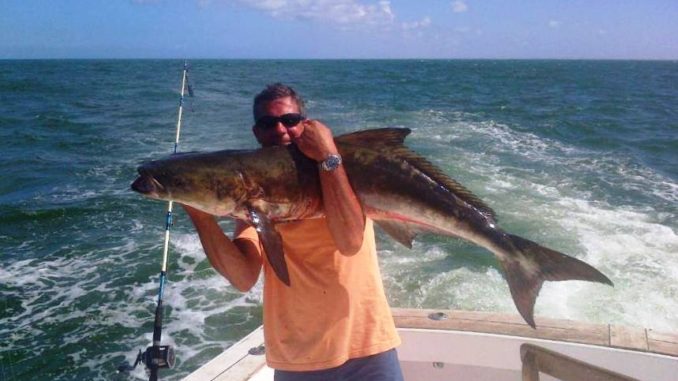
Spanish have been thick from Kitty Hawk to Rodanthe, with cobia a bonus fish
Capt. Karl Helmkamp of Manteo’s Fistful Sportfishing said nearshore fishing out of Oregon Inlet has been as good as it gets, with enough variety to interest just about any angler, thanks to weather that’s been warm enough to attract summer species but not hot enough to push some of the late-spring fish away.
“While we have been catching multiple species, our bread-and-butter fish have been Spanish mackerel and cobia,” Helmkamp said. “We have been finding Spanish on all of the trips for them, and we usually manage to get a shot or two at cobia we see while trolling for the Spanish.”
Helmkamp (252-395-1907) said the Spanish have been along the beaches between Kill Devil Hills and Rodanthe. On most trips, as soon as he clears Oregon Inlet, he puts out a spread of spoons and works whichever direction is the most comfortable. Once he finds a school of Spanish, he trolls around it until his clients limit out or have all the fish they want.
“Cobia are the surprise fish in our fishing,” Helmkamp said. “We usually find them, but there isn’t a lot of pattern to where they might be. Of course, schools of bait are good places to look, but sometimes cobia will swim right by a school of bait.
“I run (the 32-foot Fistful) from the flybridge, and that gives me an elevation advantage to spot fish. I can see Spanish working and flocks of birds in the distance, but even better, I can see the dark shadow of a cobia cruising the beach just outside the breakers.”
Helmkamp keeps a couple of heavier outfits rigged with cobia jigs and ready to go at all times. When he spots a cobia, he carefully works within casting range and has the fishermen cast to it. Cobia are curious and will usually check out a jig if they see it. Sometimes they bite it right away, and sometimes they might follow it all the way back to the boat. Whenever they bite it, that fisherman will be busy for a while.
Helmkamp said he’s usually been spotting a couple of cobia on each Spanish mackerel trip. He will run trips to target cobia, but he said the cobia fishing is usually better during the late spring.
Helmkamp said cobia may be solitary fish or they may be in small groups. He said in a group, once the first fish bites and begins fighting, the others get excited and may bite. A single cobia is a treat and multiple catches make for days to remember.




Be the first to comment